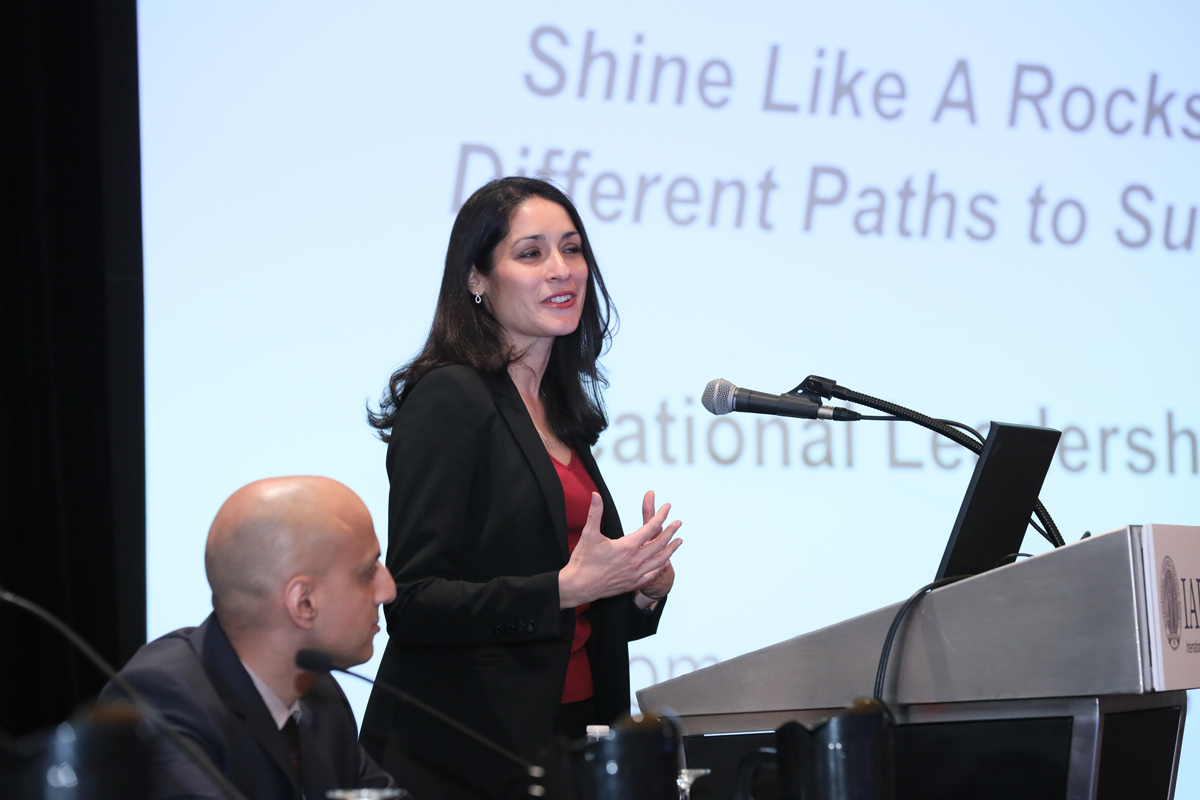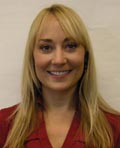Scholars’ Program Summary from Annual Meeting 2018
by Katie J. Schenning, MD, MPH and Bradley Fritz, MD
The 2018 joint AUA/IARS/SOCCA meeting featured the third annual Scholars’ Program, a full-day series of sessions directly targeted to the needs of early-career scientists in anesthesiology at any stage, from medical students through junior faculty. Registration for this program nearly doubled the numbers registered for last year’s program, with 170 Scholars and senior faculty registered for this third annual Scholars’ Program. Under the mentorship of Drs. George Mashour and Michael Avidan, Drs. Julie Freed and Michael Mathis, meeting co-chairs, involved Early-Stage Anesthesiology Scholars (eSAS) members in coordinating programming, inviting speakers, and moderating the sessions.
One of the highlights of the Scholars’ Program was the Mentoring and Networking Reception held on Friday evening. Trainees and junior faculty members were matched with more experienced leaders in our field based on the mentors’ areas of expertise and the trainees’ stated needs. The reception provided a venue for early-career scholars to receive personalized advice and to make new connections with senior investigators. The conversations continued at a networking breakfast held on Saturday morning. The eSAS board would like to thank all the mentors who donated their time and energy to make this event a success.
Drs. Vivianne Tawfik and Elizabeth Whitlock, eSAS co-presidents, opened the Scholars’ Day on Saturday morning by welcoming everyone to the 2018 Scholars’ Program, and then introducing the motivation behind the creation of eSAS and the Scholars’ Day Program. They shared that there has been concern over the past decade for the future of academic anesthesiology, and the purpose of eSAS and the Scholars’ Day program is to create a community for early career academic anesthesiologists who are passionate about advancing anesthesiology science and committed to pushing the field of anesthesiology into the future. The mission of eSAS is to serve as an academic home for developing scholars in anesthesiology. The goal of eSAS is to support and facilitate the retention and maturation of anesthesiologist-scientists by expanding opportunities for peer and senior mentorship and scientific collaboration, improving the visibility of important research performed by early-career anesthesiologists, and organizing targeted seminars about career and scientific opportunities within and beyond anesthesiology research.
The opening session, Moving from Insight to Scientific Premise to Research Program and What This is All About, was presented by Dr. Max Kelz, David E. Longnecker Associate Professor of Anesthesiology and Critical Care at the University of Pennsylvania. Dr. Kelz encouraged scholars to seize available opportunities and discussed how early experiences have the potential to shape the path of a career. He spoke frankly about planning to disprove one’s own hypotheses and urged scholars to seek out excellent mentors. Dr. Kelz left scholars with the inspirational message that the joys of scientific discovery are both achievable and unparalleled.
The morning continued with the panel Shine Like a Rockstar: Different Paths to Success. Dr. Paloma Toledo, Assistant Professor of Anesthesiology at Northwestern University, started the panel with the Educational Leadership Path by presenting tangible approaches to being promoted as a clinician-educator, including finding funding agencies that support your research, finding a place to publish all academic projects, maintaining a teaching portfolio, and identifying mentors and collaborators dedicated to your ultimate success. Dr. Peter Nagele, Professor and Chair of Anesthesia and Critical Care at the University of Chicago, continued with the Academic Leadership Path and presented fundamental “truths” about academic success, including necessary building blocks for success. He spoke about the need to solve important problems and answer questions that will impact patients and move the field forward. Dr. Laureen Hill, Senior Vice President and Chief Operating Officer of Columbia University Medical Center, described the Organizational Leadership Path. Dr. Hill described the leadership skills, attributes, and expertise necessary to climb to the C-suite. The panelists collectively emphasized the need for focus, time management, avoiding distractions, and identifying great mentors.

Next, scholars enjoyed lunch during the session Resilience Personified: Transitioning from Trainee to Junior Faculty and Beyond. Presenting the junior investigator perspective was Dr. Julie Freed, Assistant Professor of Anesthesiology at the Medical College of Wisconsin, and Dr. Ken Solt, Associate Professor of Anaesthesia, Critical Care and Pain Medicine at Massachusetts General Hospital, presented the mid-career investigator perspective. The panelists candidly described the challenges physician scientists encounter when transitioning from trainee to junior faculty, discussed the unique challenges faced by academic anesthesiologists, and reiterated the importance of mentoring that was a common theme throughout the morning. Dr. Freed addressed the great balancing act of being a physician, a scientist, and a parent. Dr. Solt addressed tough topics including the need to put your family first, and the importance of asking for help when you need it. He also touched on topics such as maximizing training, networking, time management, building a team, and developing your science.
The afternoon began with the panel Moving Fluidly Across the Translational Spectrum: Current Opioid Crisis. Junior faculty members with various clinical and research backgrounds shared their work related to the opioid epidemic. First Dr. Jennifer Waljee, Associate Professor of Plastic Surgery at the University of Michigan, discussed how prescriptions for excessive quantities of opioid medications in the postoperative period help to make these drugs available for abuse. Then Dr. Giancarlo Vanini, Assistant Professor of Anesthesiology at the University of Michigan, presented work detailing how caffeine reduces postoperative pain sensitivity in a rat model of sleep loss. Finally, Dr. Afton Hassett, Associate Research Scientist and Clinical Psychologist at the University of Michigan, shared some non-pharmacologic strategies to reduce anxiety and pain in the perioperative setting.
The program continued with the session Priorities for Developing Researchers: Perspectives from the NIH and IARS. Dr. Emery Brown, the Warren M. Zapol Professor of Anesthesia at Harvard Medical School, spoke about the importance of finding a supportive mentor, asking questions that will advance the field, and balancing competing academic and personal priorities. Next Dr. Alison Cole, Branch Chief of the Pharmacological and Physiological Sciences Branch in the Division of Pharmacology, Physiology, and Biological Chemistry at the National Institute of General Medical Sciences (NIGMS), shared advice on how to navigate the NIH, including when and how to contact program officials.

Paloma Toledo, MD, MPH, Assistant Professor of Anesthesiology, Department of Anesthesiology, Northwestern University Feinberg School of Medicine, Chicago, Illinois; Associate Editor, Anesthesia & Analgesia
The program concluded with From the Editor’s Desk: A No-Nonsense Guide to Successful Publication, an interactive presentation featuring Dr. Hilary Grocott, editor-in-chief of the Canadian Journal of Anesthesiology, and Dr. Kate Leslie, editorial board member of the British Journal of Anaesthesia, Anesthesiology, and Anesthesia & Analgesia. Dr. Grocott, Professor of Anesthesia and Perioperative Medicine at the University of Manitoba, discussed how a successful publication must stem from thoughtful study design and sound study conduct. Dr. Leslie, Head of Research in the Department of Anaesthesia and Pain Management at Royal Melbourne Hospital, shared her perspectives on how to write with the reviewer in mind and how to effectively respond to reviewer concerns. The panelists fostered discussions among the attendees on topics ranging from study registration to data sharing policies.
We and the other early-career Scholars are tremendously grateful for the enormous amount of support from Drs. Mashour and Avidan, who helped support the Scholars’ Day meeting via an R13 mechanism funded through the National Institute of General Medical Sciences (NIGMS) of the NIH. We would also like to thank other senior members of our specialty for their support that was evident at the meeting. We thank the IARS and AUA for their support and are looking forward to working together for Scholars’ Day 2019!
eSAS welcomes all early-stage anesthesiology scholars and scientists (from medical/graduate students through junior faculty) to join our group. To join, please visit us at esashq.org.
Authors

Katie J. Schenning, MD, MPH
Assistant Professor
Department of Anesthesiology & Perioperative Medicine
Oregon Health & Science University
Portland, Oregon
Bradley Fritz, MD
Clinical Fellow
Department of Anesthesiology
Washington University
St. Louis, Missouri
|